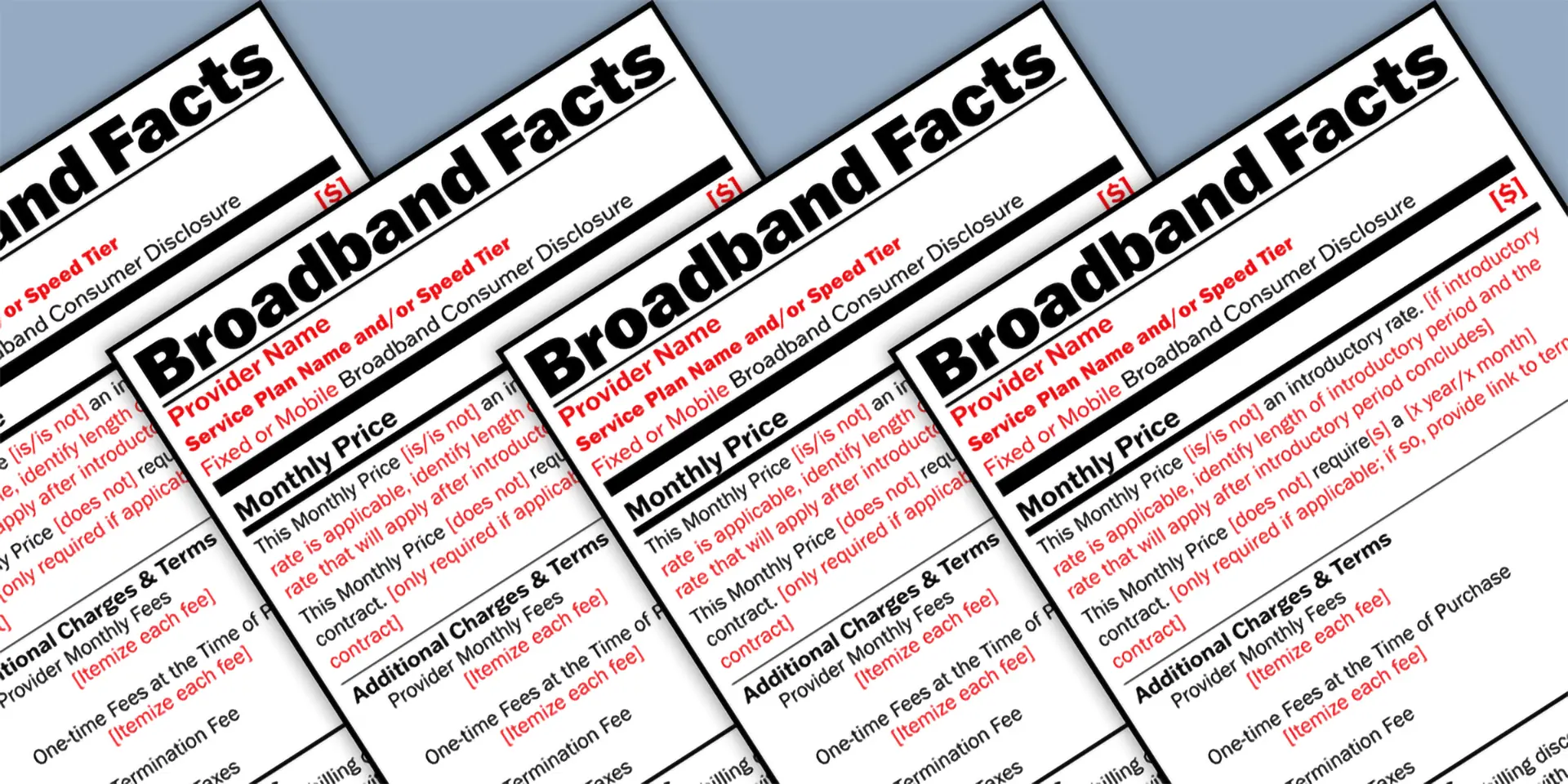


|
||
|
||

On October 10, all ISPs in the United States were supposed to have implemented and posted broadband labels. The labels were required as part of the Infrastructure Investment and Jobs Act. Large ISPs had to post labels six months ago, and now the requirement is for all ISPs.
I looked at the ISPs in a few counties I’m very familiar with, and I found a few ISPs in each county that have not posted labels that I can find on their website. I expect that a few ISPs simply haven’t done this but that others are trying to game the system. Most of the ISPs with no link to labels tell customers they need to call to see if they are eligible for service. The purpose of the labels is to let prospective customers comparison shop, and the labels must be posted on the website for anybody to find. I’m pretty sure the FCC will find this practice violates the label rules. The FCC implies in its published guidelines for the labels that it is serious about the labels and threatens fines for ISPs that don’t create labels or who create labels that don’t comply with the rules. The FCC has recently fined some small ISPs for not reporting to the FCC maps, and I highly recommend creating and posting the label rather than becoming the poster child for the FCC.
While the labels seem simple, there is a lot of information that must be disclosed to the public, so ISPs should read the guidelines. I wrote a blog earlier this year that explains the label requirements in more detail. I didn’t write this blog to drum up business, but if somebody needs advice on creating the labels, please contact me.
ISPs face an interesting challenge in creating the labels, in that they must balance what is on the labels with what is reported to the FCC maps. That automatically causes a dilemma. The FCC allows ISPs to report ‘marketing speeds’ to the FCC maps. However, the labels require ISPs to list an approximation of ‘typical’ broadband speeds that is based on internal and documented network testing. I won’t be surprised if the FCC or State broadband offices start reaching out to ISPs asking for the data to back up the speeds reported on labels.
ISPs know that the public will likely never see what they report to the FCC maps, but a lot of people are going to see broadband labels that must be prominently displayed on ISP websites. My guess is that most ISPs will claim the same speeds in both places. An ISP that greatly exaggerates speeds should feel nervous about doing so on the labels. I expect that some customers will complain to the FCC if an ISP advertises a speed or price on the labels but delivers something different.
The new labels look a lot like the nutrition labels on processed foods. The label requires basic information like the monthly price for standalone broadband, any special pricing that is in place currently and when that special pricing expires, a description of other monthly and one-time fees associated with the broadband, and the typical broadband speeds and latency. This means ISPs must prominently disclose hidden fees that are not part of any advertised price. It also means disclosing the specific details of special offers.

I’m really curious about what ISPs are going to report for upload speeds. There are a lot of ISPs claiming 100/20 Mbps on the FCC maps, but which speed tests show upload speeds significantly below 20 Mbps? How many ISPs are going to honestly disclose upload speeds under 20 Mbps, which would be an admission that their product is not broadband?
From the day I heard about the labels, I wondered how ISPs using DSL, fixed wireless, or FWA cellular broadband would report speeds. There are numerous factors that influence the speed of these technologies, which means that speeds vary significantly by customer.
I think the labels are a great marketing tool for ISPs that advertise honest speeds at a good price. These ISPs should make the labels prominent on their websites and challenge customers to compare to the competition.
Sponsored byCSC

Sponsored byVerisign

Sponsored byVerisign

Sponsored byRadix

Sponsored byDNIB.com

Sponsored byWhoisXML API

Sponsored byIPv4.Global
